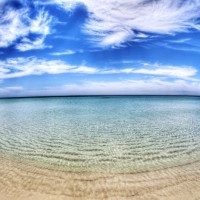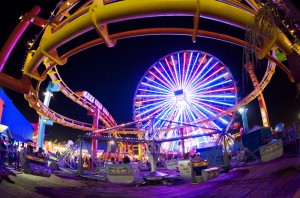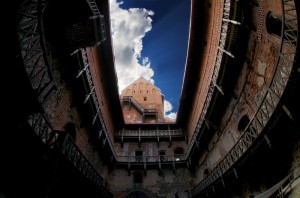
Every photographer has a favourite lens. Maybe it’s an 18-200mm zoom or a 50mm prime. Maybe it’s a wide angle zoom. Heck, maybe it’s your kit lens. But it’s a lens that you count on day in and day out. It’s an everyday lens that you take with you every time you pack your camera bag and walk out the door. It’s a lens that you know you can rely on in most situations you’ll encounter. And in most cases, it’s a standard type of lens. Nothing too crazy.
So why, then, is my Nikon 10.5mm fisheye lens one of the three that I carry in my bag every day?
When I first got into photography, I spent countless hours debating about what lenses I would spend my money on. Of course, I needed a standard zoom to cover the basics, but what else? I perused countless portfolios and tried to guess what lenses were used on my favorite photographs. I always caught myself stopping at photos taken with a fisheye lens. There was just something so powerful about those fisheye photos. The 180 degree angle, the distortion, the amount of information within a scene that was shown. It was love at first sight. Soon enough, I dropped the cash and picked up my first and only fisheye lens.
At first, it was just… fun. I took the cliché fisheye pictures of my friends and their dogs’ noses. But once I started figuring out what kinds of photography I enjoyed shooting the most, I found myself using the lens more and more. A calm and surreal view of the ocean in Florida. Fisheye. A long exposure of an Atlanta skyline at night. Fisheye. A motion-blurred black and white shot of a subway train as it passed through the station. Fisheye.
I became obsessed with this lens and it eventually got itself promoted from a box on a shelf to my camera bag. It’s now one of my two favorite lenses (the other being my 50mm f/1.4) and my portfolio wouldn’t be the same without it.
Unfortunately, the fisheye lens has gained a reputation for being a gimmicky, kooky, just-for-fun lens. I think it deserves more credit than that. I can’t count how many photos I’ve been able to take with that lens that I could have taken otherwise. And they aren’t just-for-fun photographs either. They can distort architecture to give an amazing perspective; they can give landscapes some feeling of other-worldliness.
Granted, you may not want all of your photos to be taken with a fisheye lens, but I highly recommend adding one to your repertoire. If you do any sort of landscape, cityscape, or architectural photography at all, I’m confident that you’ll enjoy seeing things differently through a fish’s eye. And if you need a touch of inspiration to get you started, why not take a look here?








